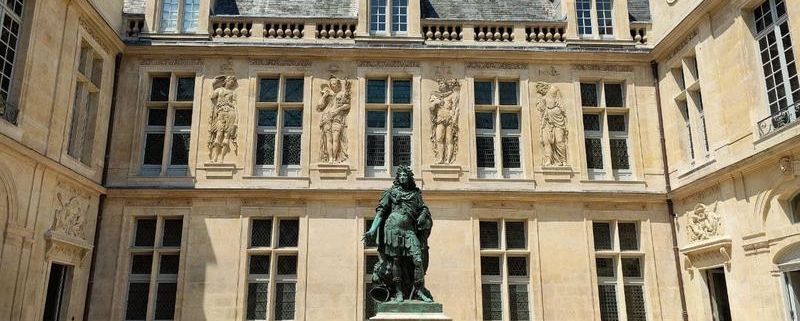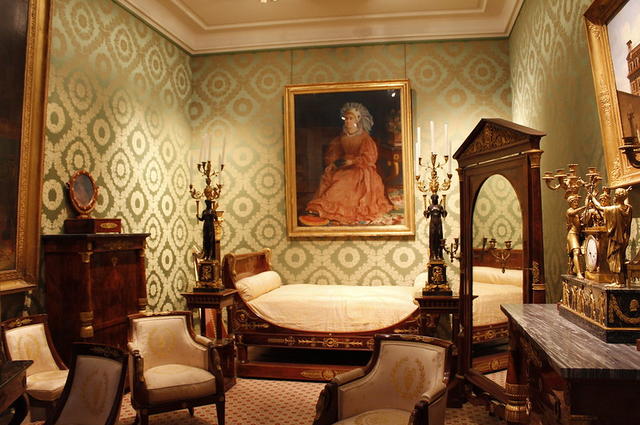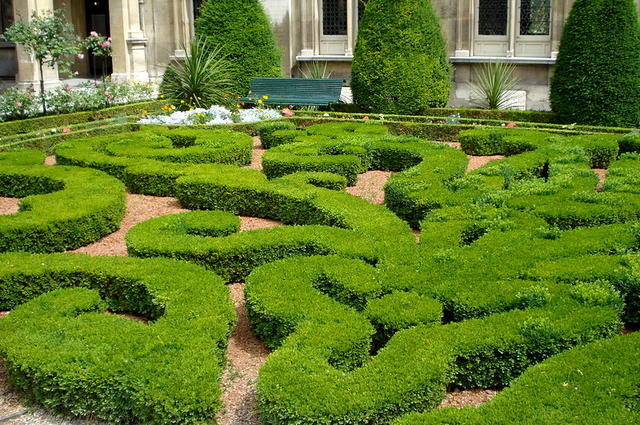The Carnavalet Museum in Paris
There are 170 museums in the capital of France, but Carnavalet is considered the most Parisian of them all. It collects everything relating to Paris: its culture, history and outstanding personalities. And the collection of these artifacts is impressive — in 140 halls there are about 580 thousand curious exhibits.
Carnavalet owns such rare specimens as a ring that belonged to Louis XIV and Napoleon Bonaparte’s gold handled toothbrush. It’s also home to the remains of the Bastille prison.
» See more – Paris museums you have to see
Even if you are not seriously interested in history, you’ll probably enjoy seeing the setting described in the pages of French novels.
History of the museum
In the second half of the 19th century, Baron Haussmann was uncompromisingly destroying old Paris and changing the architectural look of the capital for the better. This was the time of the famous Parisian boulevards. Worn-out and not-so-worn-out houses were mercilessly demolished, but often their contents — furniture, antique knick-knacks, household items, dishes, entire rooms and much more — the city authorities found interesting.
Carnavalet became a closet in which they stored everything that was left of old Paris. Historians and art historians systematized the accumulation, and now it is a bright original attraction about the life of the city.
Located in the city center, the museum is housed in two old mansions: the eponymous «Carnavalet» and its neighbor, who bears the sophisticated French name of Le Peletier de Saint-Fargeau.
» READ MORE – Walking in the Marais: route map
When you enter the museum courtyard, the first thing you see is an ancient arch decorated with bas-reliefs. It immediately becomes clear that this curious place will occupy you for more than an hour. The flowerbeds in the courtyard will appeal to aesthetes — hese intricate lawns and floral plantings are very nice. The front of the building is decorated between the windows on the second floor with sculptures representing the seasons.
As is common in many museums, the halls are arranged in chronological order, from the Neolithic Age to the 20th century. On the first floor you’ll find the most ancient archaeological collections. It is interesting to look at mammoth teeth, a dugout of 5000 years of age or a first-aid kit of a surgeon practicing in the third century.
In the next hall, models of Paris at different times are on display. It’s easy to spend a long time here. How can you tear yourself away from buildings the size of a quarter of a matchbox that create the image of the most romantic city on the planet?
How about looking at the antique signs that adorned the buildings of Paris 100–200 years ago? You can see the signs and emblems of cabarets, optician’s store, modistresses, confectionaries, shoe shops, city midwives, beauty salons, handwritten theater posters, and many other interesting examples.
The museum also has nearly 3,000 paintings depicting panoramas of Paris, with its hidden corners and parade squares, at different times in history. There are also many portraits of famous Parisians who wrote their names in the history of the city.
Lovers of antiques should visit the halls that feature historical furniture. Parisian carpenters in former times created real interior masterpieces. The gilded cradle of the imperial prince in the form of a ship is one of them. Posh desks, painted chests of drawers, chests decorated with iron, boudoirs decorated with tapestries… you will feel as if you are in a room belonging to wealthy Parisians 100–200 years ago.
Moreover, the museum has an exquisite collection of art objects, a room with 50,000 coins and seals, a model of the Bastille, models of the guillotine, texts of death penalty orders and the Declaration of Human Rights. Several halls are also devoted to the Napoleon Bonaparte era. Visitors can see the legendary troop shop of the conquering emperor, which holds 110 items.
Rooms of famous Parisians
Room 21 is dedicated to the famous Madame de Sevigne, the 17th-century writer who popularized the mansion. The Marquise kept up a correspondence with her daughter for 25 years, detailing her events at the palace. A century later, her letters were published and began to be parsed into quotations. She wrote the witty phrase: «The more I get to know people, the more I love dogs.» The interior of the room has been preserved down to the smallest detail, and even the desk at which Madame wrote hasn’t left the walls of the mansion in centuries.
The emerald-colored boutique with colored stained glass windows is a recreation of Master Foquet’s jewelry shop. It is not surprising that the famous jeweler became a celebrity at the beginning of the nineteenth century: his boundless imagination and originality can be seen in the details that decorate the Parisian treasury.
Marcel Proust is a world famous French writer. He became famous when he wrote his seven-volume epic. You can visit a perfect reconstruction of the room in which he wrote at Carnavalet.
It is hard to avoid the salon of the Marquise de Pompadour, to whom women’s fashion owes so much. She introduced the fashion for heels, tiny handbags (Reticules), and was the first to wear stockings. The champagne tulips that adorn each and every feast are considered to be inspired by the Parisian beauty.
» READ MORE – All flea markets in Paris
After four years of renovation, the museum reopened on May 29, 2021. As before, admission is free. But because of the pandemic, you must reserve a time to visit on the official website.
Opening hours are 10 a.m. to 6 p.m. The museum is closed on Mondays, January 1, May 1 and December 25.
If you are not staying in the Marais quarter, the easiest way to get there is by metro: take line 1 to the Saint-Paul station.
Address: 16 Rue des Francs Bourgeois
The museum is part of our itinerary of attractions of the Marais quarter. And if you like to travel through the interiors of past centuries, check out the Cognacq-Jay family museum nearby. This mansion just around the corner from Carnavalet is sure to also interest you.
Café in the museum garden
The Carnavalet Museum doesn’t create the boredom that can happen in a museum. If you are bored with the archeology department, you are welcome to visit the art gallery. If you are tired of the paintings you can peruse the rich interiors of influential Parisians. If you are bored with the gilded monograms you can get distracted in the signage hall. There’s something for everyone in this unique museum.
» See more – Tourist passes for Paris
Enjoy your visit!










 Fabio Roque / Unsplash
Fabio Roque / Unsplash  yaoqi / unsplash
yaoqi / unsplash  Public domain
Public domain  Jezael Melgoza / Unsplash
Jezael Melgoza / Unsplash  Jean-Baptiste D. / Unsplash
Jean-Baptiste D. / Unsplash  Jesse Gardner / unsplash.com
Jesse Gardner / unsplash.com  George Rex / Flickr / CC-BY-SA 2.0
George Rex / Flickr / CC-BY-SA 2.0 Public domain
Public domain
Leave a Reply
Want to join the discussion?Feel free to contribute!